Third National Indian Seminar
Building on the successes of the first two events, the third National Indian Seminar was held at Beaumont Scout Reservation near St. Louis, Missouri from August 9-16, 1980. Approximately 125 participants and 67 faculty/staff members from around the country participated in the seven-day event. Like previous seminars, the central focus of the event was to train and educate Arrowmen on Native American customs, culture, and traditions. 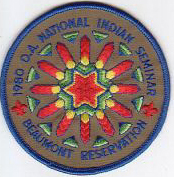 National OA Committee member and Lead Adviser for Indian Events, Don Thom along with OA Executive Secretary, Bill Downs served as Co-Directors of the seminar. Another National OA Committee member and Indian Events subcommittee member, Greg Guy, served as the seminar’s Program Director. Greg had been actively involved in the planning and administration of all previous National Indian Seminars, and Steve McMurtry (1973 deputy conference vice chief for Indian Events) once again assisted him at this event. Youth leaders for the seminar included Mark Hobgood serving as Program Staff Chief, and Peter Haines serving as Administrative Staff Chief. National Chief Jeff Herrmann spent three days at the event and was able to witness first hand the devotion to details by all participants, faculty, and staff. Several special guests and consultants were also in attendance throughout the event including Miss Melanie Tallmadge (1980 Miss Indian America); Mrs. Nettie Showaway of the Yakima Tribe; and the Order’s good friends Scott & Doris Tonemah of the Kiowa and Caddo Tribes respectively.
National OA Committee member and Lead Adviser for Indian Events, Don Thom along with OA Executive Secretary, Bill Downs served as Co-Directors of the seminar. Another National OA Committee member and Indian Events subcommittee member, Greg Guy, served as the seminar’s Program Director. Greg had been actively involved in the planning and administration of all previous National Indian Seminars, and Steve McMurtry (1973 deputy conference vice chief for Indian Events) once again assisted him at this event. Youth leaders for the seminar included Mark Hobgood serving as Program Staff Chief, and Peter Haines serving as Administrative Staff Chief. National Chief Jeff Herrmann spent three days at the event and was able to witness first hand the devotion to details by all participants, faculty, and staff. Several special guests and consultants were also in attendance throughout the event including Miss Melanie Tallmadge (1980 Miss Indian America); Mrs. Nettie Showaway of the Yakima Tribe; and the Order’s good friends Scott & Doris Tonemah of the Kiowa and Caddo Tribes respectively.
The cost of the seminar was $110.00 per participant, and included instruction in Indian singing, dancing, crafts, legend history, and customs. Cultural areas featured at the third National Indian Seminar were those of the Northern Plains/Plateau, Southern Plains, Northeastern, and Southeastern Indians, and participants received expert course instruction throughout the event. In addition to the instructional program, participants were given the opportunity to put their knowledge to work at three separate pow-wows throughout the week. The 1980 National Indian Seminar was an extremely successful Order of the Arrow event featuring good food, fine facilities, good camping, and excellent instruction. Any Arrowman who left the seminar feeling ‘short-changed’ had only them self to blame.
The next National Indian Seminar would be held in 1982.
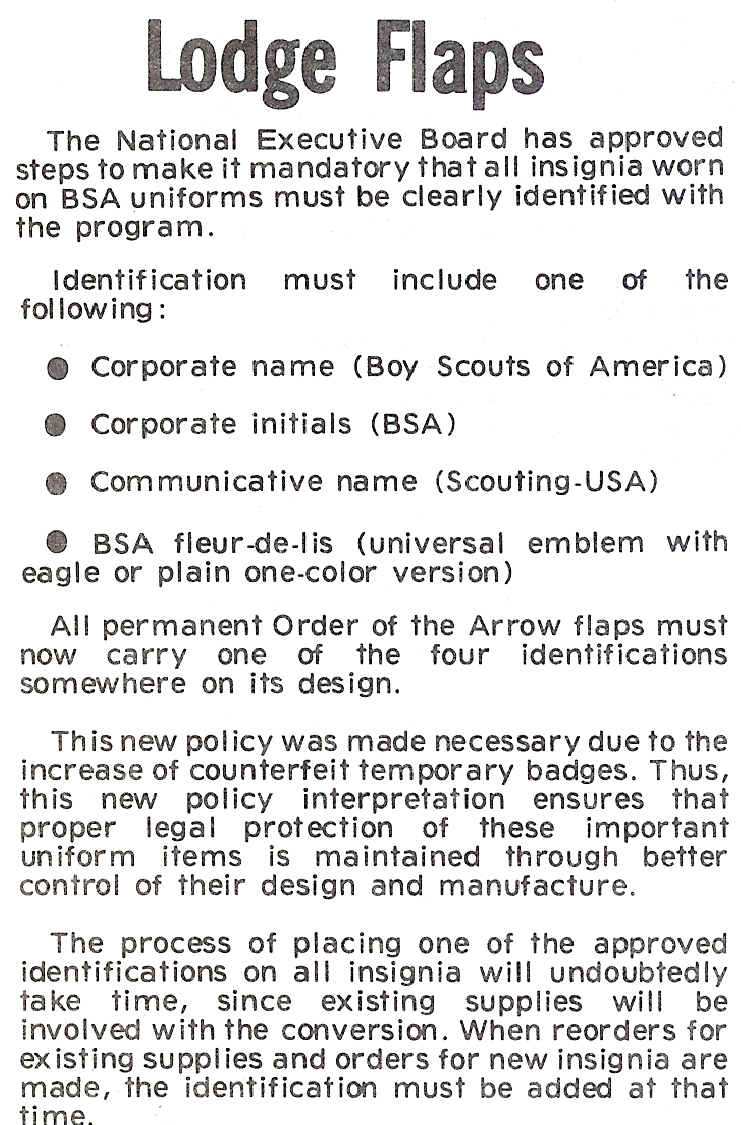 ell.
ell.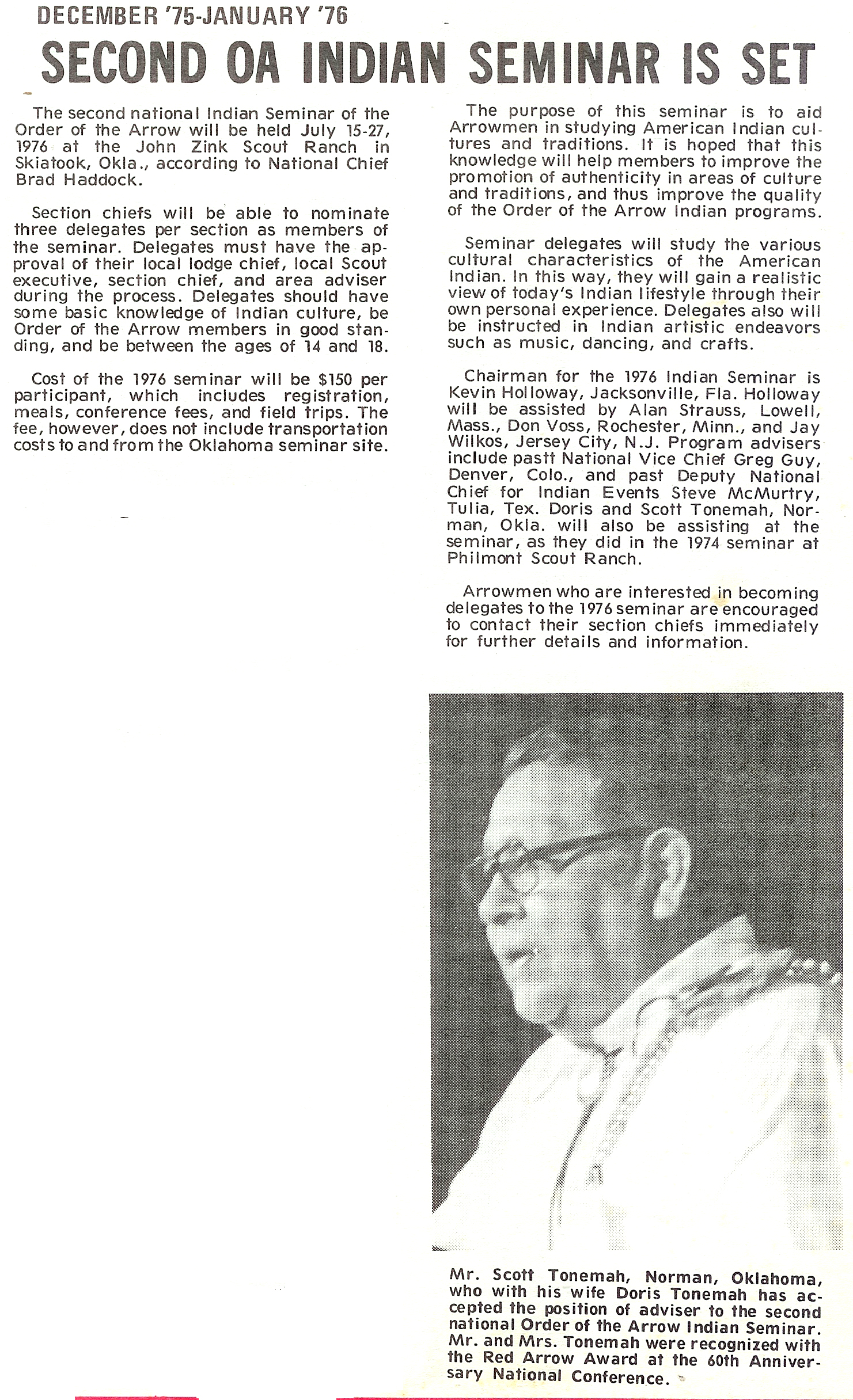 Don was appointed to the
Don was appointed to the 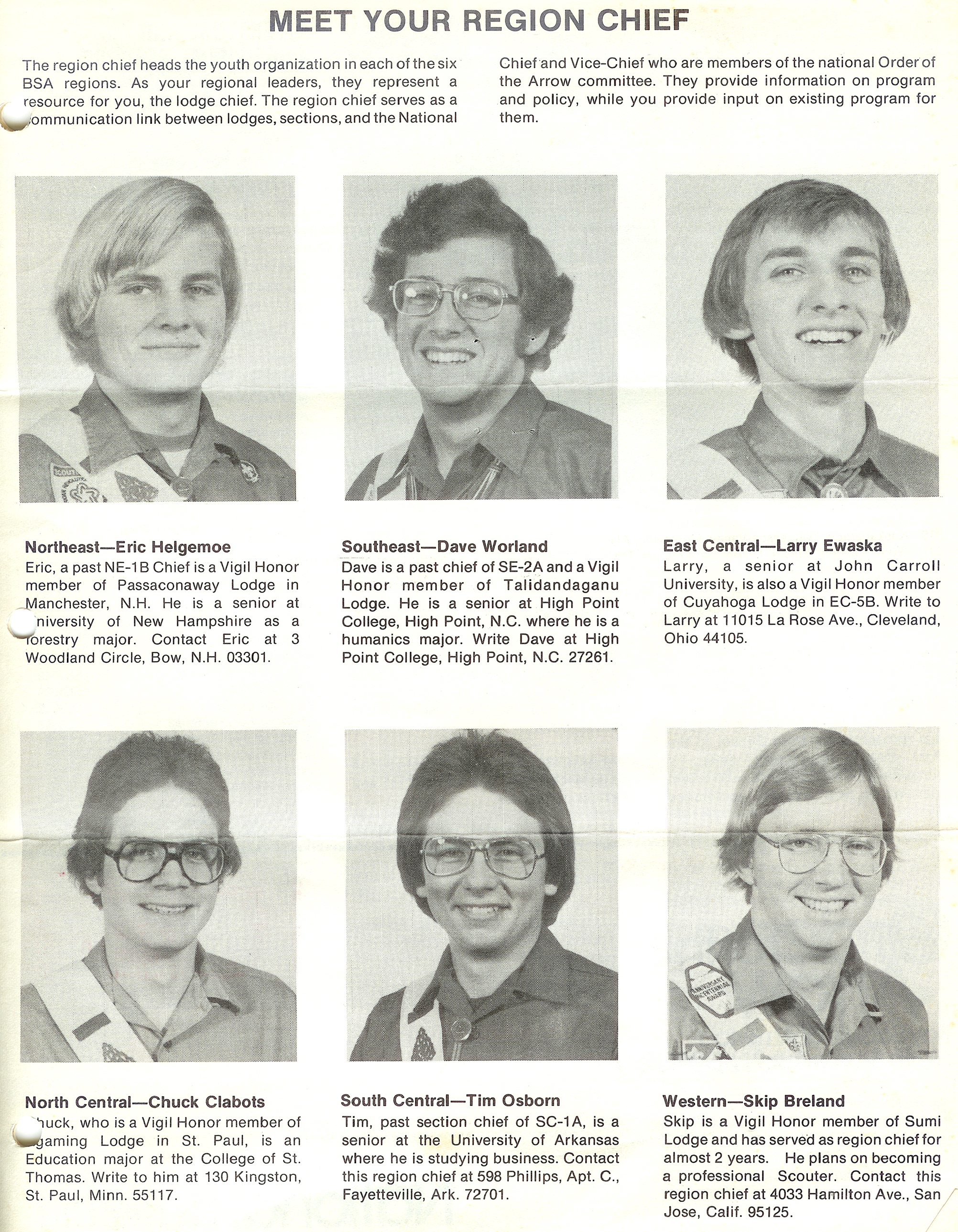 The Region Chiefs elected were:
The Region Chiefs elected were: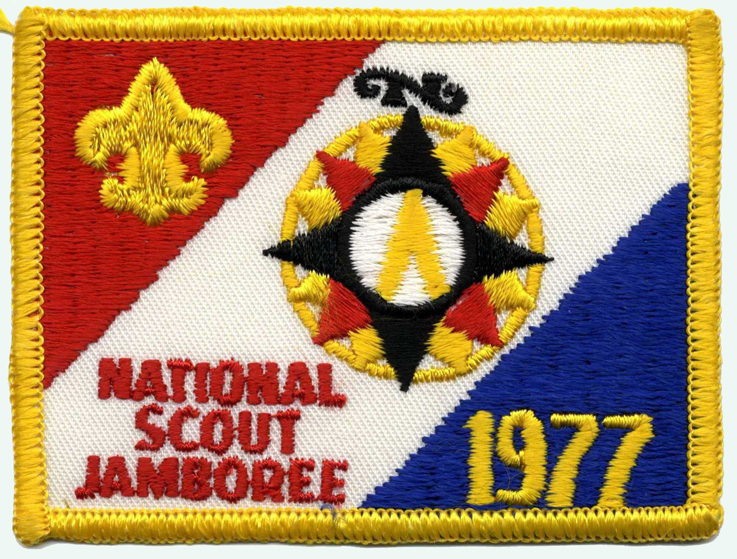 Special appearances were made by the current Miss Teenage America, Country singer Dottie West, Olympics decathlon champ Bruce Jenner and the highlight of the closing show was entertainment provided by Lone Scout Burl Ives by his singing a medley of his hit songs. Another highlight was the re-creation of the Brownsea Island encampment where twenty-one Scouts and two leaders played the games and practiced the skills from 1907 in period clothing as worn by the world’s first Scouts. To reflect the sign of the times and the National effort to convert to the metric system, all troops were given a special “Scout Metric Measuring Kit”. 4½ inches (11.4 cm) of rain fell over a two-day period, but that did not dampen the spirits of the Jamboree participants (although Moraine State Park became known to all in attendance as “More rain” State Park).
Special appearances were made by the current Miss Teenage America, Country singer Dottie West, Olympics decathlon champ Bruce Jenner and the highlight of the closing show was entertainment provided by Lone Scout Burl Ives by his singing a medley of his hit songs. Another highlight was the re-creation of the Brownsea Island encampment where twenty-one Scouts and two leaders played the games and practiced the skills from 1907 in period clothing as worn by the world’s first Scouts. To reflect the sign of the times and the National effort to convert to the metric system, all troops were given a special “Scout Metric Measuring Kit”. 4½ inches (11.4 cm) of rain fell over a two-day period, but that did not dampen the spirits of the Jamboree participants (although Moraine State Park became known to all in attendance as “More rain” State Park).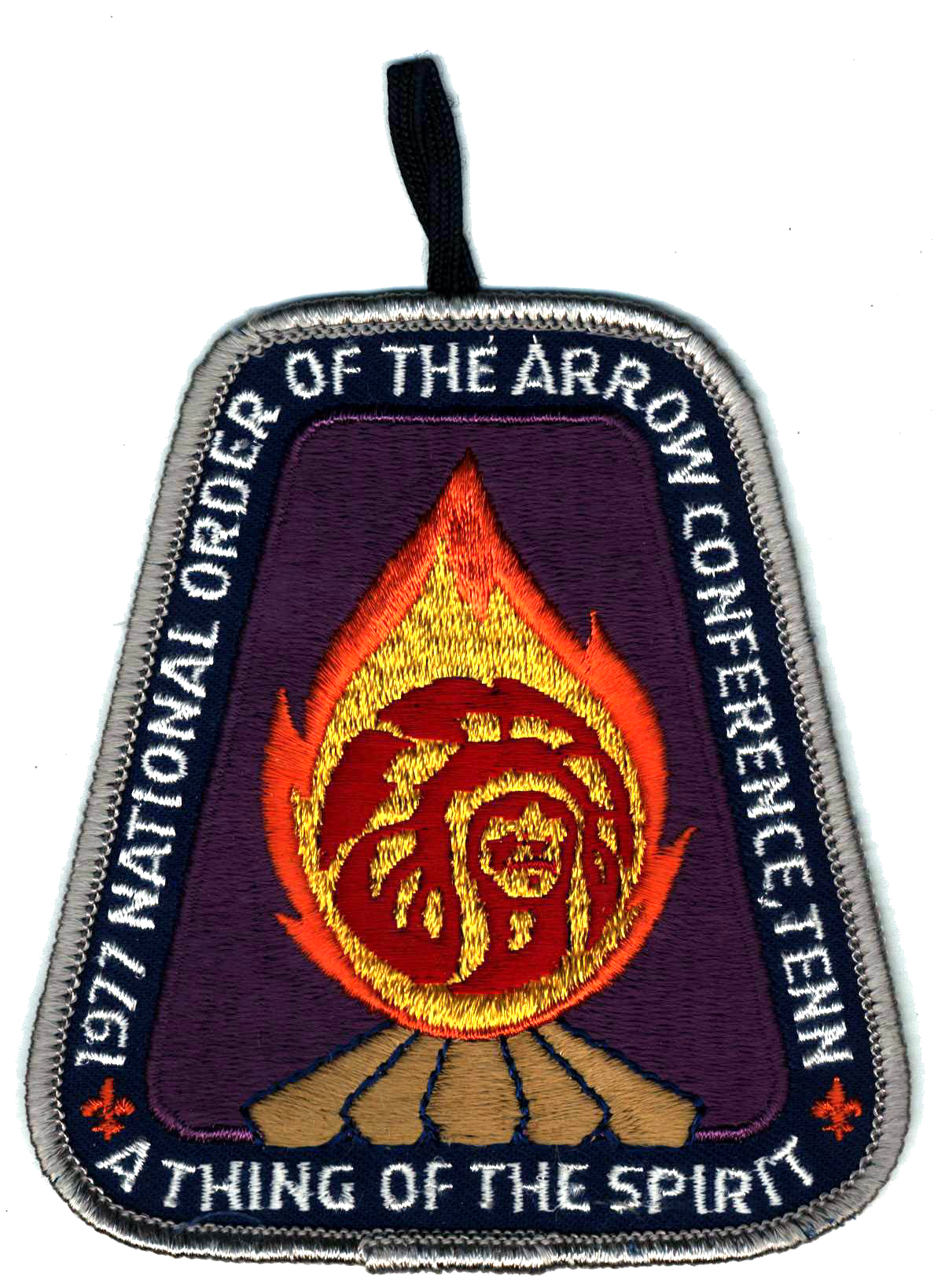 There were 3,900 Arrowmen in attendance including the Founders
There were 3,900 Arrowmen in attendance including the Founders 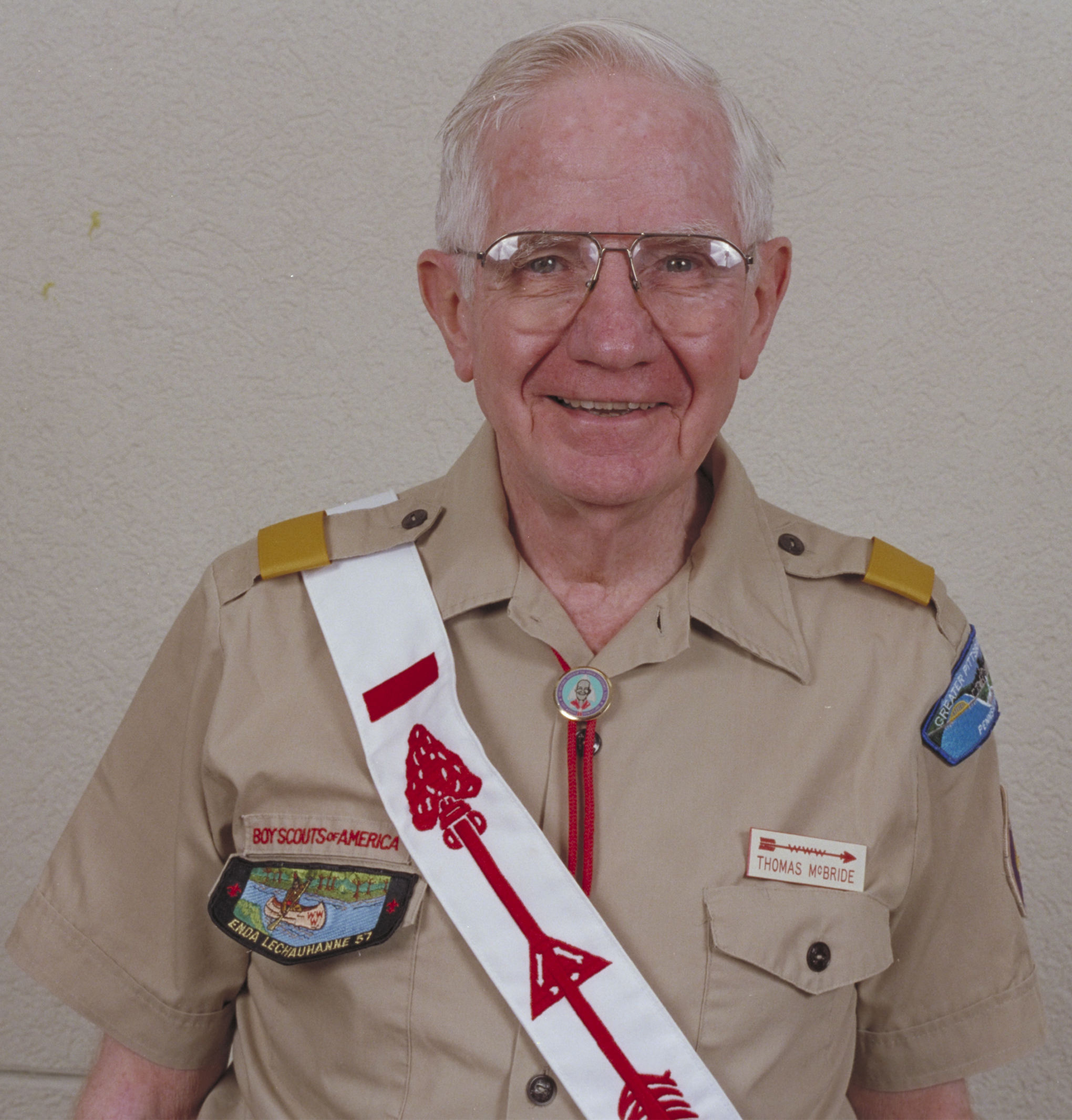 Tom McBride was induct
Tom McBride was induct ed into the Order of the Arrow in 1939 as a member of Anicus Lodge, Wilkinsburg, Pennsylvania.
ed into the Order of the Arrow in 1939 as a member of Anicus Lodge, Wilkinsburg, Pennsylvania.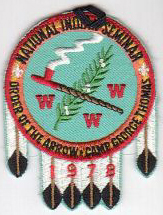
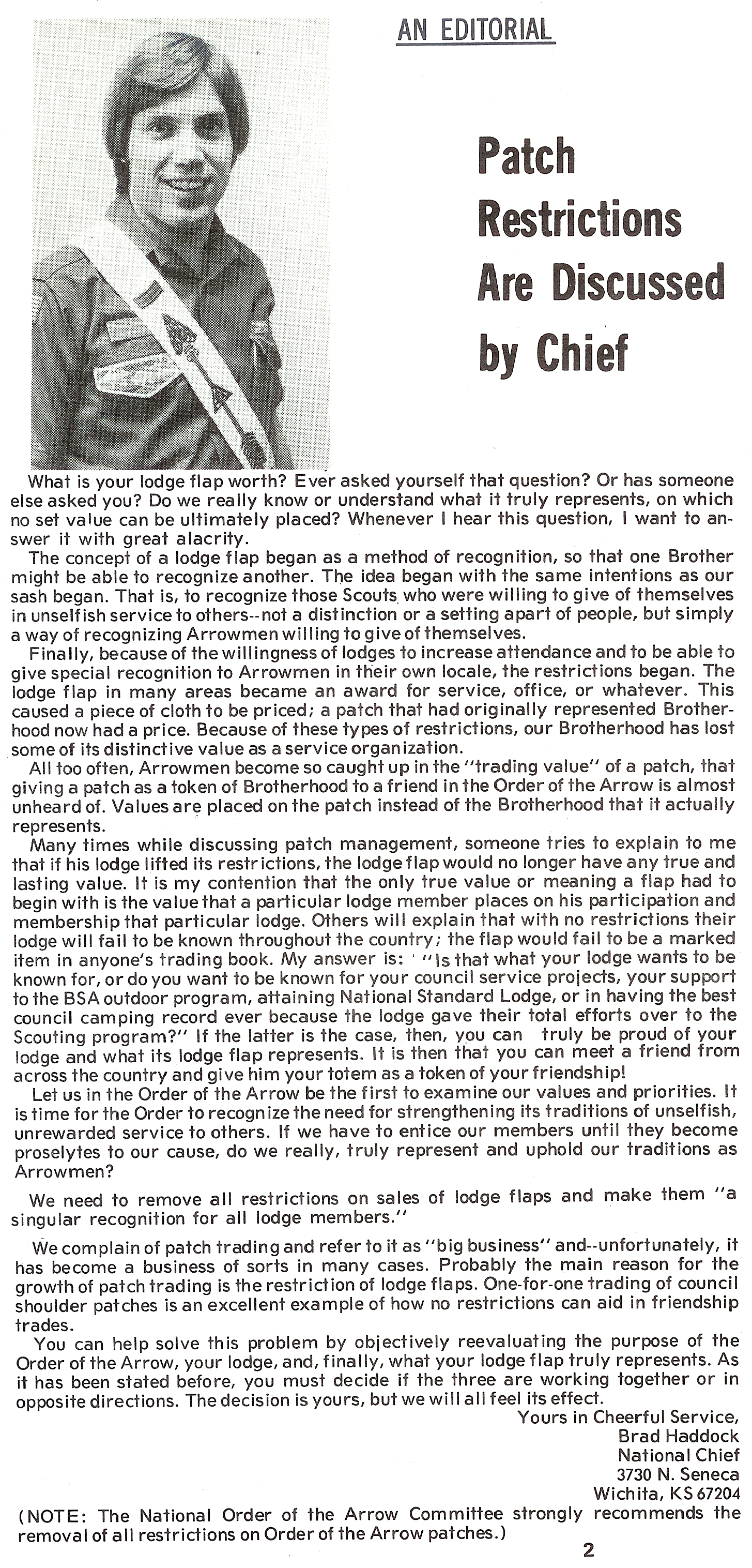 Some lodges wanted to restrict their insignia to only their members. These restrictions took various forms. Lodges like Kepayshowink Lodge of Saginaw, Michigan, restricted their badges by placing a “no trade” restriction on them. That meant an Arrowman outside of the lodge had to convince a fellow Arrowman to break their trust with their lodge in order to obtain a flap from him. There were many types of restrictions. Walika Lodge of Van Nuys, California restricted their flaps to one per OA advancement (creating a three flap maximum). In Topa Topa Lodge of Ventura California they had the same restriction with an additional flap available if a lodge member climbed Chief’s Peak. Other lodges restricted their flaps to one per year; one per 8 hours of service; two per lifetime, etc.
Some lodges wanted to restrict their insignia to only their members. These restrictions took various forms. Lodges like Kepayshowink Lodge of Saginaw, Michigan, restricted their badges by placing a “no trade” restriction on them. That meant an Arrowman outside of the lodge had to convince a fellow Arrowman to break their trust with their lodge in order to obtain a flap from him. There were many types of restrictions. Walika Lodge of Van Nuys, California restricted their flaps to one per OA advancement (creating a three flap maximum). In Topa Topa Lodge of Ventura California they had the same restriction with an additional flap available if a lodge member climbed Chief’s Peak. Other lodges restricted their flaps to one per year; one per 8 hours of service; two per lifetime, etc.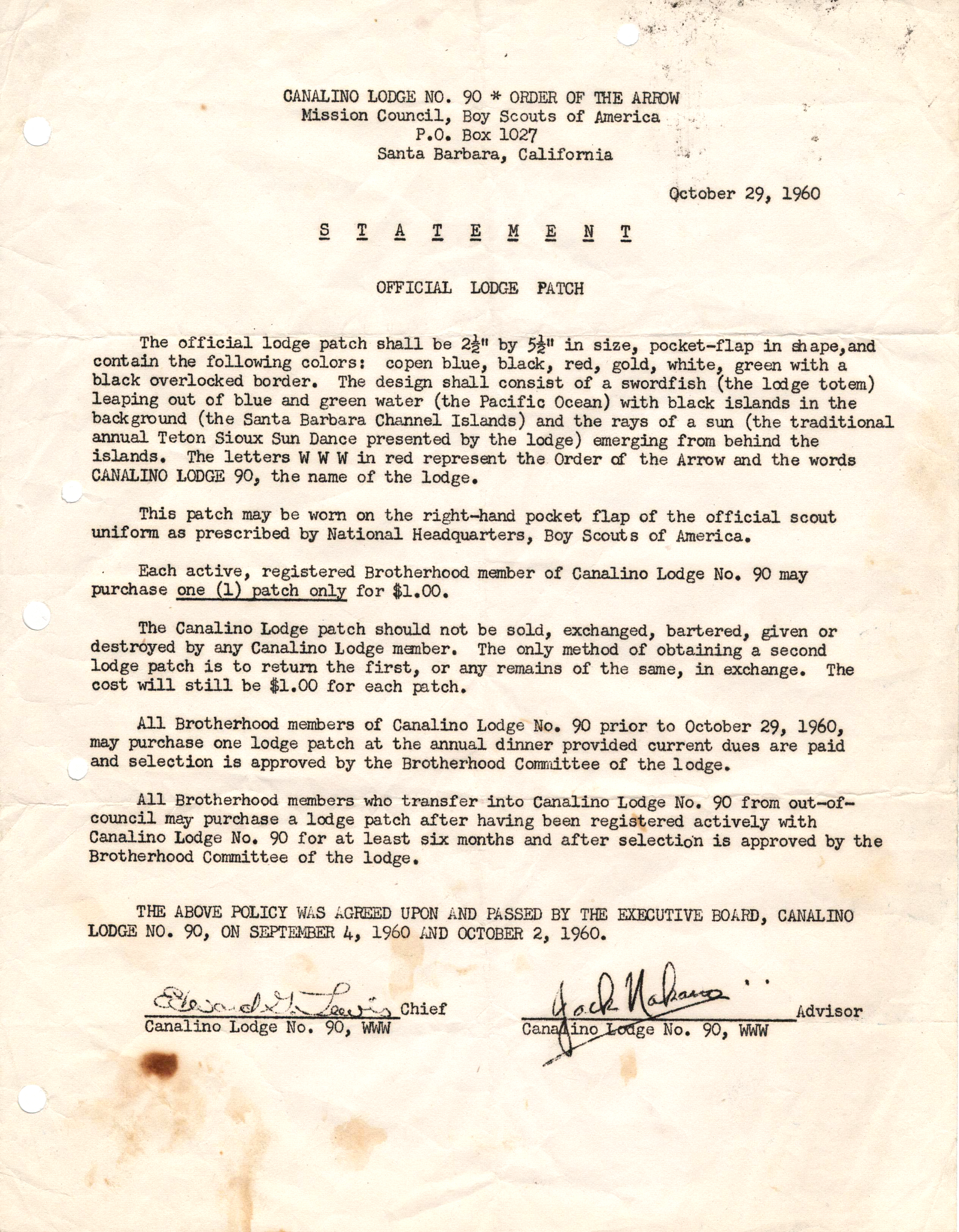 d with the following admonition,
d with the following admonition,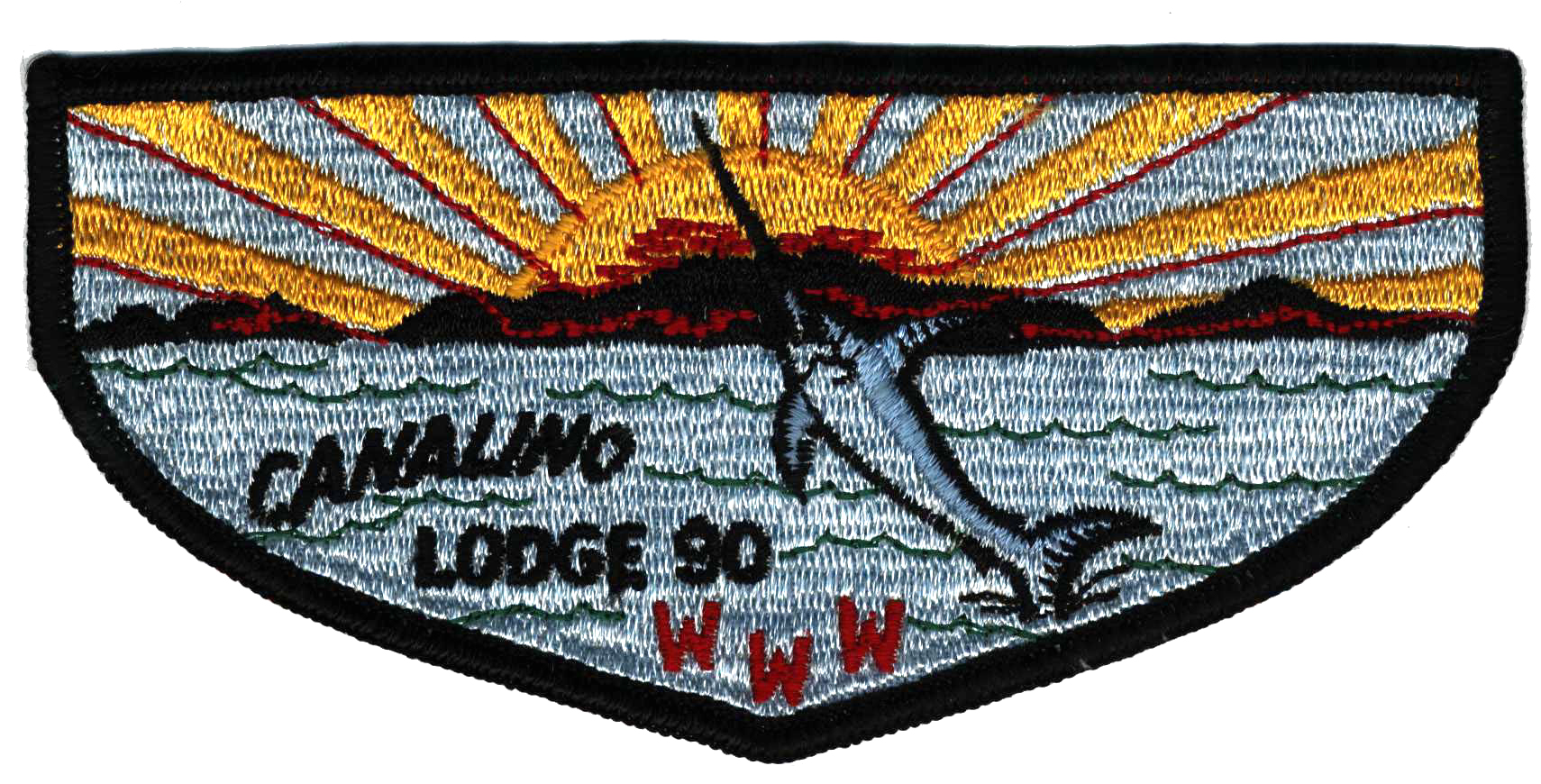 blems and tempers flared. At a
blems and tempers flared. At a 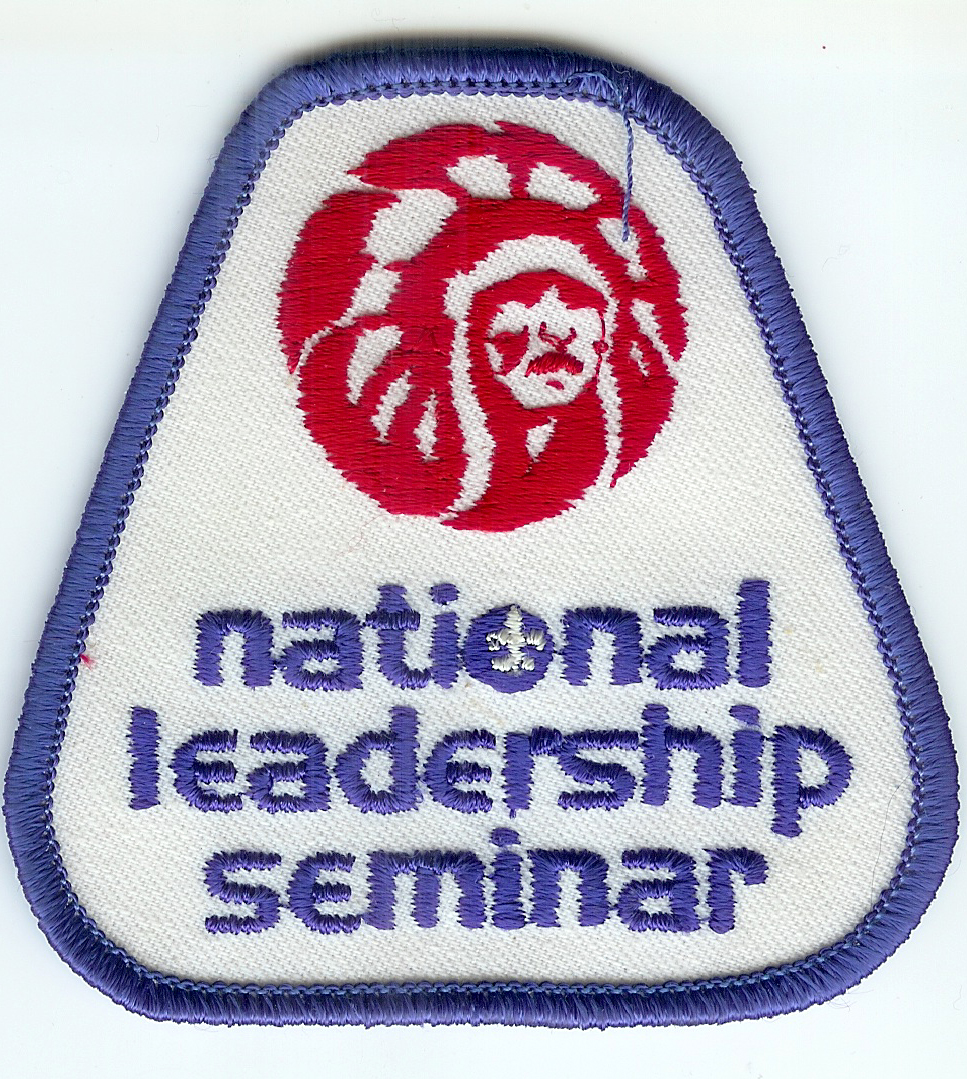 The program was announced at the
The program was announced at the 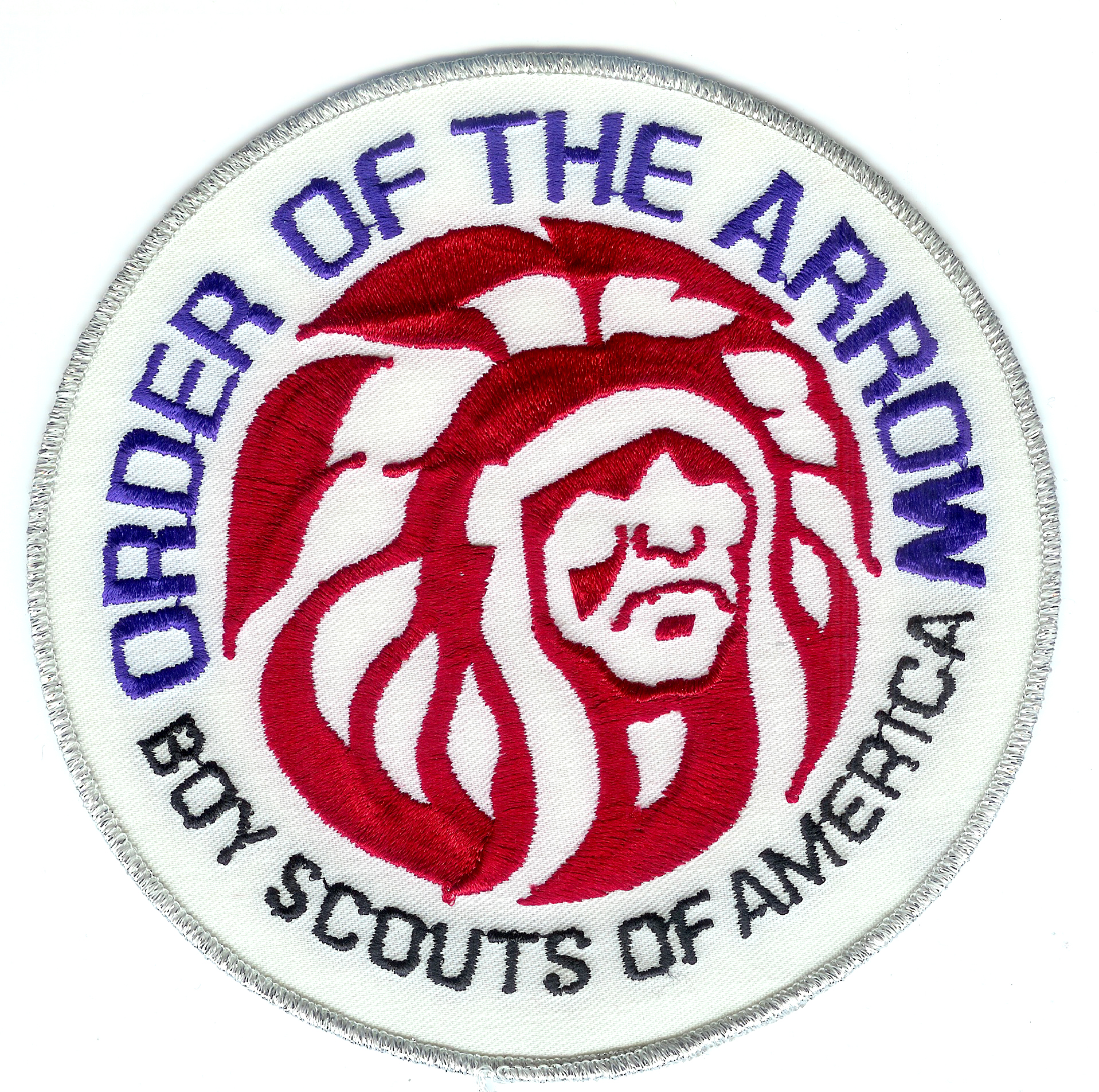 Commercial artist and
Commercial artist and